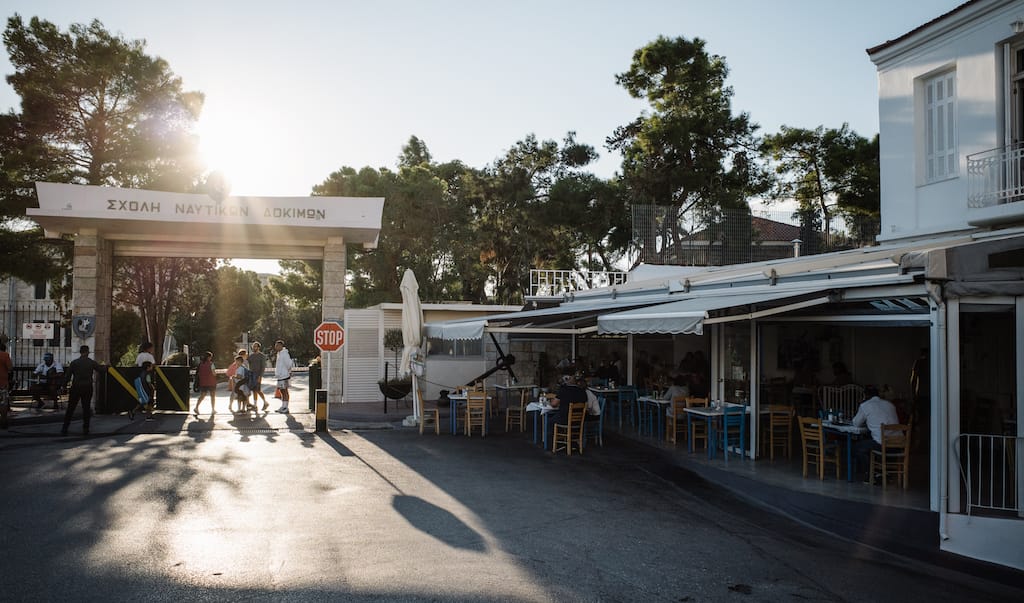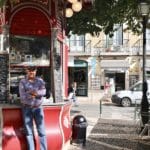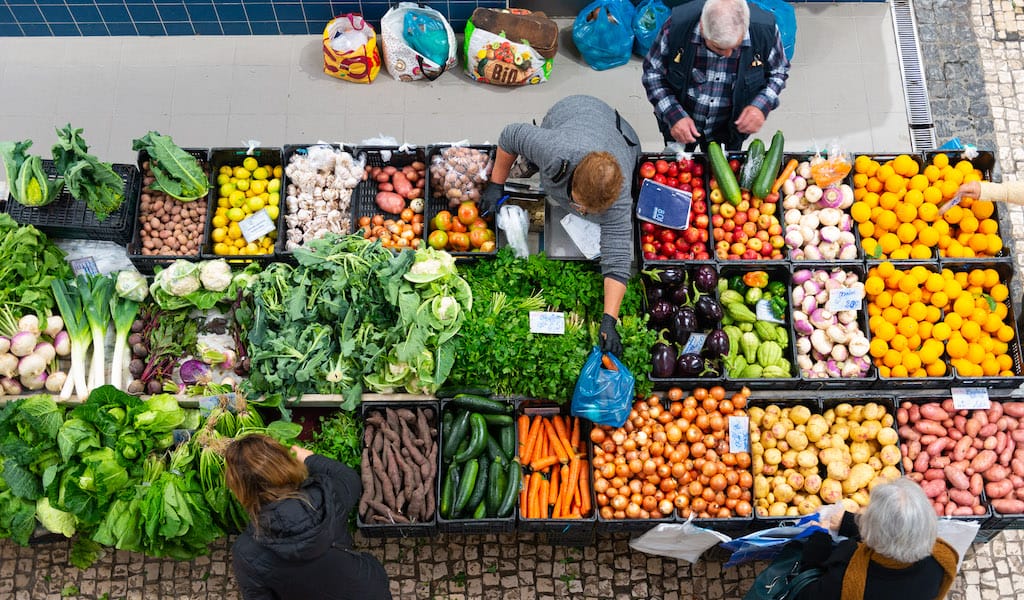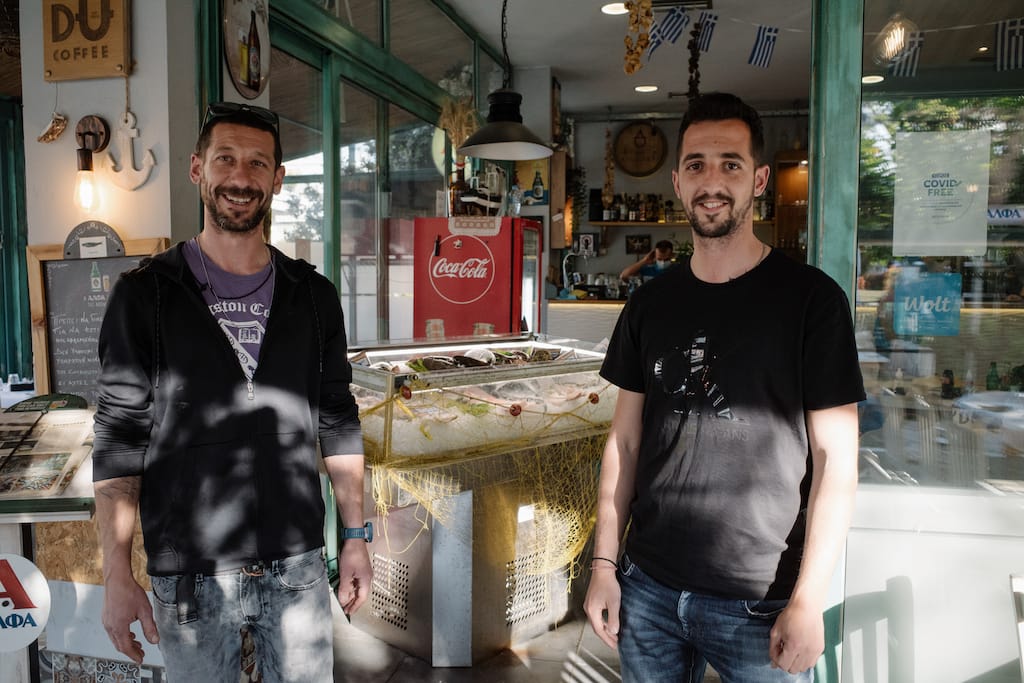Piraeus – located about 10 kilometers south of downtown Athens – is not just the largest port of Greece, but it is also among the top five most important ports in Europe. Aside from the port, Piraeus covers a large area, some of which is residential and other parts which are more industrial. Though it may seem chaotic at first glance – especially for the many visitors who arrive at the port by ferry from a lovely little island and are shocked to suddenly find themselves in a grey city – the truth is that Piraeus hides a nostalgic flair and charm that is rare to come across in cities these days.
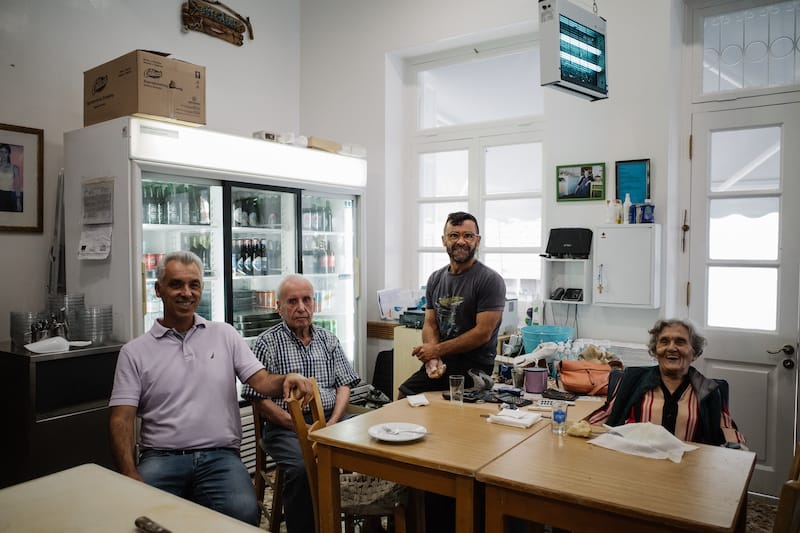
Due to the fact that Piraeus is the main link between Athens and many of the nearby islands, it has historically been inhabited by islanders, sailors and seamen. Margaro, short for Margarita, was one of the islanders that moved from Mykonos to Piraeus in the early 20th century. In 1917, young Margaro opened her first oinopoleion, an old-school term used for an eatery that sells wine. It was located right in the heart of Piraeus, on Kountouriotou street.
In the early 1940s, right after Greece was liberated from Nazi occupation, Margaro moved her restaurant to another address in Piraiki, the southwest coastal area of Piraeus. The place was hidden in a corner right by the Greek Naval Academy, and Margaro worked for years serving food – daily casseroles and baked dishes – to the sailors and dockworkers. Margaro kept wine in large barrels stored in the eatery’s basement; back then, almost every household in the neighborhood used to get its wine from her.
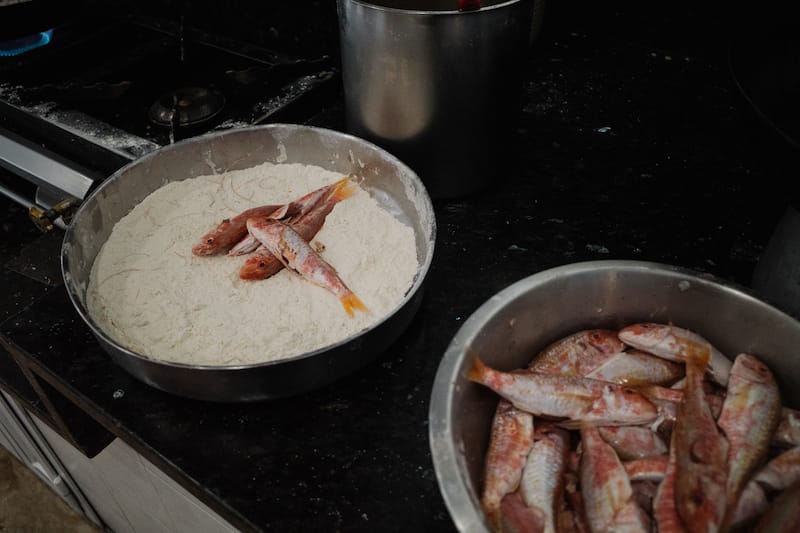
During the 1970s, her son, Lazaros, took over the taverna. Lazaros, who was in his early thirties at the time, started altering the menu, gradually adding more fish; fresh, simple, mostly small and affordable fish, such as anchovies and fried smelt. The eatery’s identity and menu was soon shaped anew, turning it into one of the most historic places to eat in the whole of Attica – a true cult favorite.
Margaro’s location is unique. When the weather is good, the restaurant scatters tables out in the street. You may end up eating right by the gate of the Naval Academy, watching the young cadets dressed in their sparkling white uniforms entering and exiting their school premises. The menu is small (in fact, there’s no written version) and that’s its main charm: specials include fried red mullet or koutsomoura (a local type of red mullet), fried shrimp and scampi (when in season) and, occasionally, fried pandora (a white fish in the sea bream family) if they come across it fresh at the fish market. The fish, all fried on a two-burner stove, are served with fresh bread and Margaro’s famous tomato salad. And that’s about it – all of Margaro’s regulars already know their order!
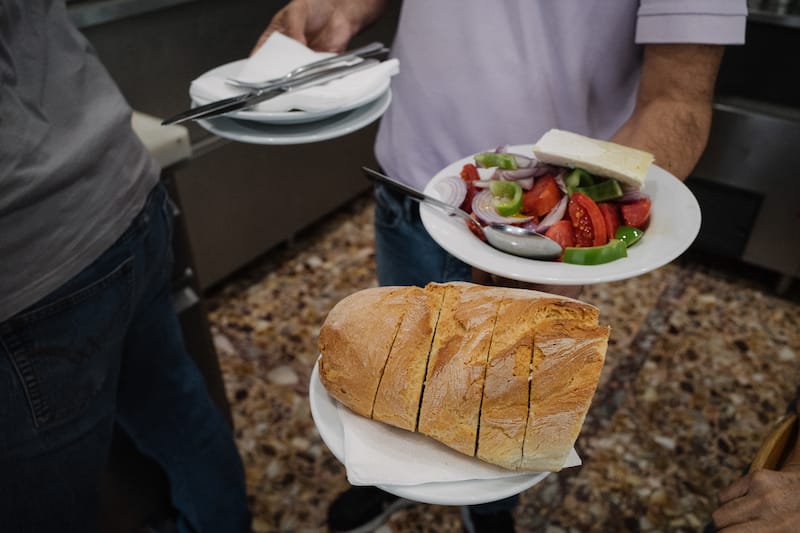
The fish and seafood at Margaro is served extremely fresh and always perfectly fried and seasoned: crispy on the outside, juicy and full of flavor inside. The salad, which lands first on the table along with the bread, is always made with flavorful tomatoes and thinly cut sweet onions, topped with a lovely creamy feta from Argos (in the Peloponnese), drizzled with a generous amount of olive oil and sprinkled with wild oregano. Make sure you dunk the bread into the salad to enjoy every bit of the olive oil blended with the tomato juices. To be able to enjoy such quality, in such an environment and on such a budget is simply precious, and is why this restaurant has reached legendary status.
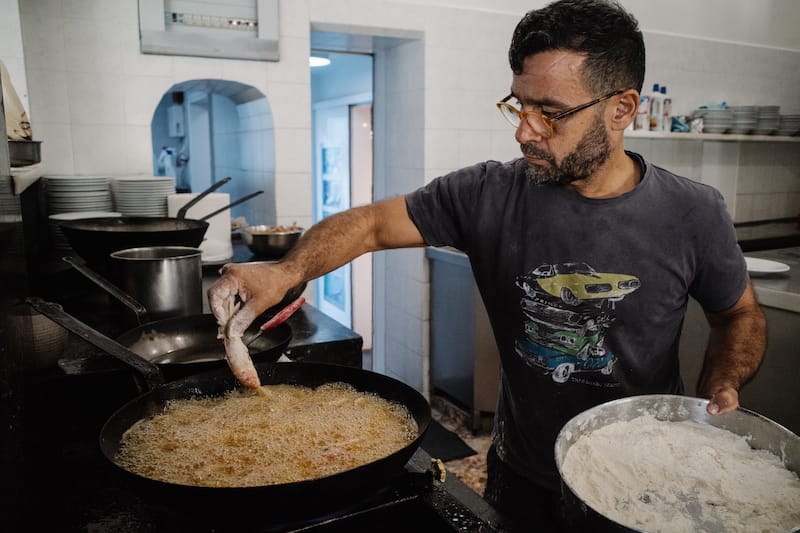
Today, Margaro is run by the founder’s four grandchildren; Yiannis, Constantinos, Margarita, and Spyros. All four of them literally grew up in the restaurant, and – taking after their grandmother – they are some of Greece’s frying masters! Lazaros is still around, now in his late eighties, but still there to make sure things roll out just fine, as they have for the past several decades.
Margaro is a can’t-miss spot where visitors can enjoy a true Greek experience. For years, they’ve operated with the same schedule: open every day from noon to midnight, except Sundays when they close at 5:30 p.m. in order to do the general cleaning. If you go on a weekend, make sure you go early as the tables fill up in no time.
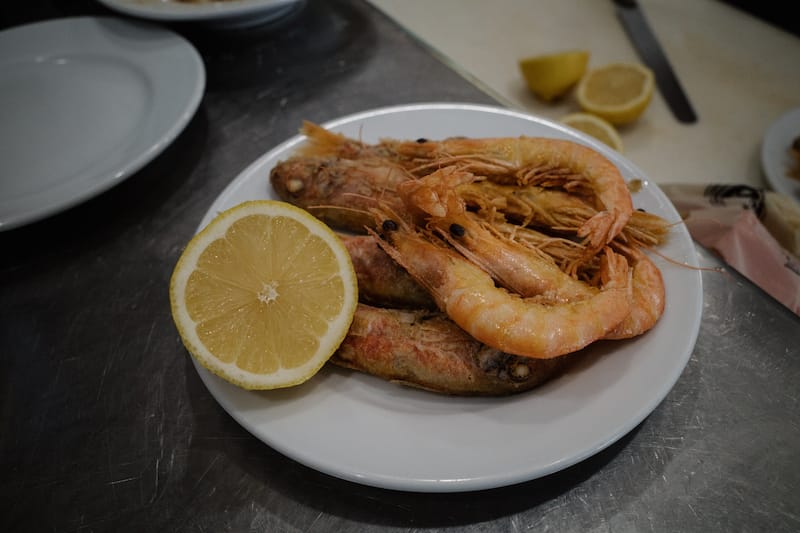
Try to go while it’s still light out; grab a small table, ideally in the middle of the street and close to the Naval Academy gate. Order a bottle of ouzo or the house wine, relax, and take your time. Place your order: salad, mullet and either the scampi or prawns. The fish and seafood is served whole, as is common in Greece. Enjoy it slowly, using your hands to pull the mullet from the bones and peel off the shells from the shrimp or scampi. Observe how the Greeks eat their fish – they are truly masters leaving behind only tiny bones, including the fish heads. Breath in the moment here, smell the sea breeze and enjoy your drinks. When you are finally ready to bring the afternoon to a close, don’t forget the dessert: a meal at Margaro meal usually ends with a complimentary handmade treat, usually a semolina halva or a luscious portokalopita, a syrupy orange cake – yet another of grandma Margaro’s legacies.
Published on October 21, 2022
Related stories
December 8, 2022
LisbonAs amazing as Lisbon’s food and drink scene is, many of its markets are underwhelming. The sad truth is that it’s necessary to head outside of the capital to witness spaces that showcase the real bounty of Portugal’s fields, orchards, vineyards, farms and waters. The recently-renovated Mercado do Bolhão, in Porto, is one such place.…
June 3, 2022
AthensNeo Psychiko, a suburb north of central Athens, is just a 15-minute drive from the city’s busy Syntagma central square yet feels like a world away. Residential and family-oriented, the area is greener and quieter than downtown. At its heart is Plateia Eleftherias (“Freedom Square”), a lively spot with a playground, a kiosk, cafes and…
September 28, 2020
LisbonThe kiosk in beautiful São Paulo square, located close to the waterfront, in the Cais do Sodré neighborhood, always reminded us of a beacon, with its vibrant red color and many light bulbs. Except rather than warn off passersby, it attracts the hungry and the thirsty, even more so now that André Magalhães, the chef…







































